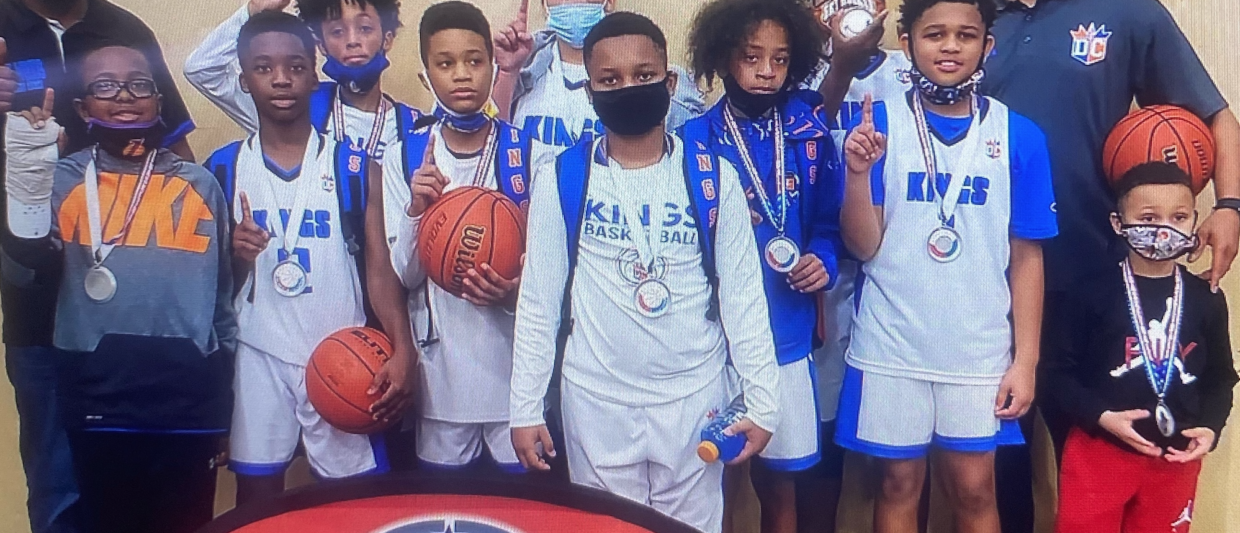Youth Athletes Happy to Get Back in the Game
By Zacharia E. Washington
Reporting Texas
Elgin residents, Robert Worthy, 15, and Kendrick Worthy, 12, love playing basketball. The brothers were heartbroken when the COVID-19 pandemic hit in early 2020 because their basketball season was cut short.
Basketball was an important source of social interaction. It was how they made friends, and it positively impacted their mental and physical health.
“I was upset because I couldn’t do anything. One thing I hated most is I started getting chubby,” Kendrick Worthy said.
For parents, the shutdown of sports meant more time with the kids. Robert and Kendrick’s dad, Javon Worthy, called the situation “bittersweet.”
“They were like brothers (with their teammates) so when we weren’t able to play in practice, they were hurt. You’d see them on FaceTime calls, group chats, Instagram with all of them [the team] talking about how they couldn’t wait to get back,” Javon Worthy said.
Almost two years later, most youth sport programs in the Austin area have returned to in-person practice and games. Aspen Institute’s State of Play report shows that 47% of children in the United States have returned to their pre-pandemic level of sports participation and 17% are more active.
The number of participants in i9 Sports in South Austin, a youth recreational sports program, decreased significantly in 2020 compared to 2019. The program offers youth flag football, soccer, baseball, basketball, volleyball and lacrosse leagues.
Eddie Clemons, director of Texas GameTime Basketball, an organization that hosts AAU youth basketball tournaments, also saw a decrease in participation. Most AAU teams that participated in his tournaments went from having a dozen or so players in 2019 to six or seven in 2020, Clemons said.
In summer 2021, things started returning to normal, said Wes Barbour, director of operations at i9 Sports. The i9 Sports program filled more than 80% by summer 2021. The influx of youth participants had as much to do with a need for social interaction as it had to do with love of the game, Barbour said.
“It was an overwhelming push (from parents) to get these kids socialized,” Barbour added.
Barbour noticed a change in his athletes’ behavior.
“It was the worst summer with a major behavior problem. Because [the kids] are learning online, they are coming into summer camp with very bad social behavior,” Barbour said.
Clemons also saw a change in players. “When we first reopened, players were on edge way more,” Clemons said. “It didn’t take much to get [the players] on ‘that’ level.”
Beginning in April 2020, children’s mental health-related emergency department visits increased, according to numbers from the CDC. The number remained elevated through October. Mental health-related visits for children ages 5-11 increased approximately 24% from April 2020 to October 2020. For ages 12-17 visits increased 31% during the same time period.
“A lot of them need structure. This (pandemic) was a recipe for disaster,” said Julie Wiernik, sports psychologist at Texas Center for Sport Psychology in San Antonio.“Playing sports is better socially, mentally and physically, than sitting in front of a computer all day.”
The pandemic caused young athletes to develop a new normal. Some competitive youth athletic programs, such as Austin Junior Volleyball, required masks all season. Teams and coaches in AAU basketball require the use of hand sanitizer before and during games and practices and random temperature checks.
One of the biggest adjustments in youth sports, according to Lonnie Welch, owner of Impact Sportz in Austin, a youth AAU basketball program, is the use of virtual learning. “We use virtual learning, YouTube, TikTok for drills. It keeps kids entertained and into it,” Welch said. “I’ll use our app to allow the players to access the drills, and I’ll continue to use our app throughout the future.”
Kendrick Worthy is just happy to be back on the court interacting with his friends again.
“It’s good that I can see other kids, because during the pandemic I couldn’t see anyone. But now that it’s chill, I get to interact with other kids and play and get into how it used to be.”
His father sees those improvements firsthand. “I’m grateful,” Javon Worthy said. “Just to see youth sports bringing kids together is a great thing.”
